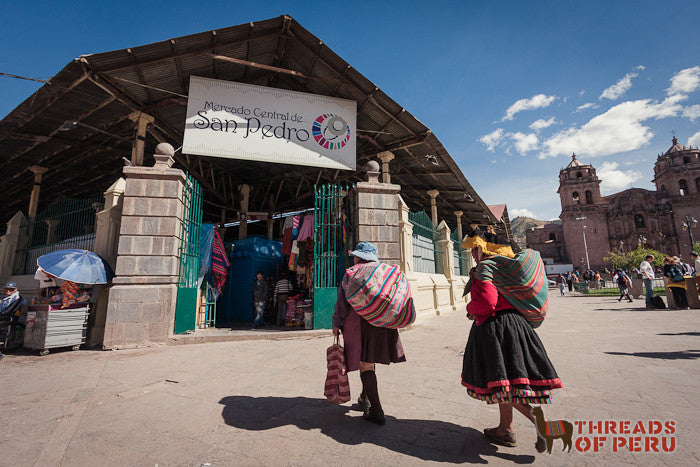
Getting to know Cusco is like fitting together pieces of a puzzle. The city is divided into districts. The districts are divided into urbanizacións. And the urbanizacións are divided into distinctive pieces centered around plazas and squares.
In the historic center, every plaza and square is slightly different. The Plaza de Armas vibrates with life and energy. Plaza San Francisco is more laid back and often home to food festivals. Mercado San Pedro (or simply "Central") and the square that surrounds it are the thriving commercial center of the colonial section.
It's not the biggest, cheapest, best, or even busiest market in the city but San Pedro's central location means it's the one tourists are most likely to visit. Unlike other markets where dismembered animals greet you at the entrance, San Pedro opts for a gentler approach. Handicrafts line the entrance and run the gambit from tacky to inspired and cheap to priceless.

Next comes the juice bars, piled high with fresh fruit. Here patrons perched on whitewashed stools sip colorful juices and listen to the whirr of blenders liquifying sweet concoctions of seasonal produce.
Only after passing the juice bars will you come to the butcher shops, with big racks of beef, pork, and lamb hanging from solid hooks. Further down the aisles there are stands selling animal organs, lard, and even muzzles. Before nose-to-tail eating became trendy in developed countries, it was — and is — an important way of life; a way to make sure nothing goes to waste.

Next come the fruit and vegetable stands. I had my suspicions that being 11,000 feet in the Andes would make fresh produce hard to come by but it turns out the proximity of the Amazon and its tropical climate means a decent selection. There are plenty of mangos, pomegranates, and cherimoyas to go around.

Interspersed with the produce you can also find bread stalls, cheese sellers, and the occasional fungus and roe shop. In the back of the market, business transform from purveyors of ingredients to fresh-cooked food itself. Here locals and tourists sit shoulder to shoulder on low benches eating from restaurants with one or two special dishes. All the way back against the rear wall, bigger restaurants with individual blue booths serve more items but stick to the Peruvian tradition of set menus.
Mercado San Pedro is housed in a large building but the market atmosphere spills out onto the streets around it. Booths with DVD's and books stand in front of larger shops selling things like shoes and wool. Street vendors push their carts outside the market offering cool fruit on hot days and warm popcorn on cold nights.
In many places around the world, markets form the heart of the city. I'm not sure that holds true for Cusco. With so many important parts making up the whole, perhaps San Pedro is more like a stomach — not the most vital organ of the city but one it certainly couldn't do without.

